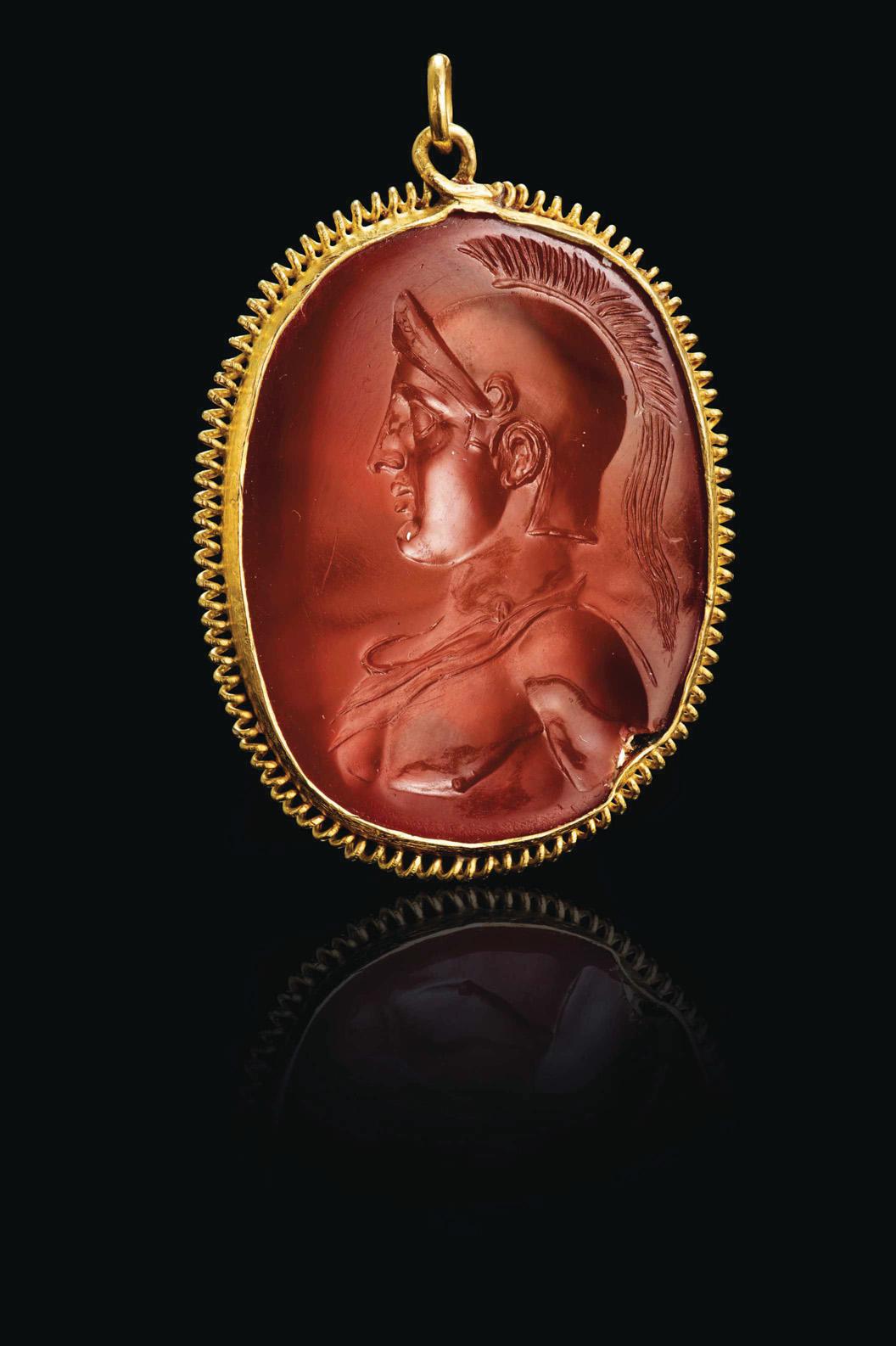
The Grand Tour was an important rite of passage for wealthy young men, a final flourish in their education and an extended jolly. At its peak in the 18th century, the Tour remained fashionable until the early 1800s. Travellers spent months or even years exploring the great cities of Europe and the wonders of the ancient world. After gazing at the ruins of ancient Rome, and trekking to the excavations at Herculaneum and Pompeii, some aristocrats with near-bottomless pockets embarked on the shopping binge of a lifetime. They carted marble busts of Roman emperors and bronze gods and goddesses back to their newly built mansions. These impressive mementos signalled their owners' wealth, worldliness and their intellectual refinement.
Amongst the haul might be engraved hardstones known as intaglios, used in the ancient world as wax seals. (Intaglio means 'engraved' in Italian.) Although far tinier than the statement busts and bronzes, they were prized by souvenir seekers for their individuality and artistry. Intaglios were made from materials such as jasper, carnelian and lapis lazuli, and less commonly precious gems like amethyst and garnet. Unlike a cameo, with a design protruding from the background, in an intaglio the image was carved down into the surface of the stone. This meant it could be pressed into a small puddle of hot wax to create an impression, and used to authenticate letters or documents.
Across the Greek and Roman Empires high-status individuals possessed an intaglio, usually set into a ring. They chose an image that was meaningful to them or that they hoped would bring good fortune: deities, heroes, myths or motifs such as birds, insects and flowers. Wearing a finely carved intaglio was a symbol of wealth and importance, but also had a very practical purpose - intricate intaglios were expensive and difficult to make, and therefore difficult to forge. This made their seal unique.
This story is from the {{IssueName}} edition of {{MagazineName}}.
Start your 7-day Magzter GOLD free trial to access thousands of curated premium stories, and 9,000+ magazines and newspapers.
Already a subscriber ? Sign In
This story is from the {{IssueName}} edition of {{MagazineName}}.
Start your 7-day Magzter GOLD free trial to access thousands of curated premium stories, and 9,000+ magazines and newspapers.
Already a subscriber? Sign In

Lisa Coppin
The Cotswold Company’s chief creative officer shares the pieces that mean so much to her

TRAVEL
Six of the best pineta, plus a festive trip to Covent Garden. Review of The Orange, Belgravia by Katie Pike, travel stories

OLD SHEFFIELD PLATE
Stumbled upon by chance, this ingenious material was a more affordable option than solid silver, and well-preserved examples are particularly desirable today

Merrily on high
Summoning servants since the 1700s, bell boards create instant English country-house style (even if you don't have any servants). Emma Longstaff dons her pinny

Let it snow
Nostalgic, magical and highly collectable, snow globes are curious objects of wonder that never fail to instil joy

Velvet Crush
Once the preserve of the wealthy, velvet finally touched all levels of society, thanks to advances in its production process

Celebrating in the Stable
Antiques dealer Julia von Hülsen specialises in Gustavian pieces - all of which look perfectly placed in her German home

THE SHOW MUST GO ON
Victorian toy theatres charming and exquisitely designed miniature worlds have inspired theatre royalty for decades. Today, the tradition is being kept alive by a small but talented network of makers

NICHOLAS LEES
The ceramic artist talks to Dominique Corlett about new ways of working with clay and blurring the edges of solid objects

Candy CHRISTMAS
Pastel hues, vintage decorations and bowls of sweet treats: the festive run-up is gloriously joyful at Bettina Færgeman's historic Copenhagen apartment, where there's an emphasis on entertaining...